holy land IV - mount of olives
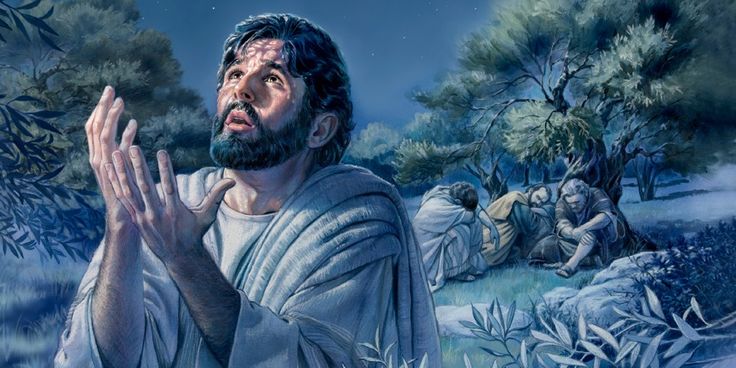
I'm very sorry that the posts are coming so slowly. This was a big trip, and I'm taking extra time to process. These travel posts are also quite different from what I'm used to writing. Normally, I would simply copy an entry from my journal, edit it a bit, then schedule it for publication. Now, I'm writing these from scratch and I want to make sure I have all my facts and figures in order.
We visited two very distinct areas on the Mount of Olives. The first is a large Jewish cemetery:
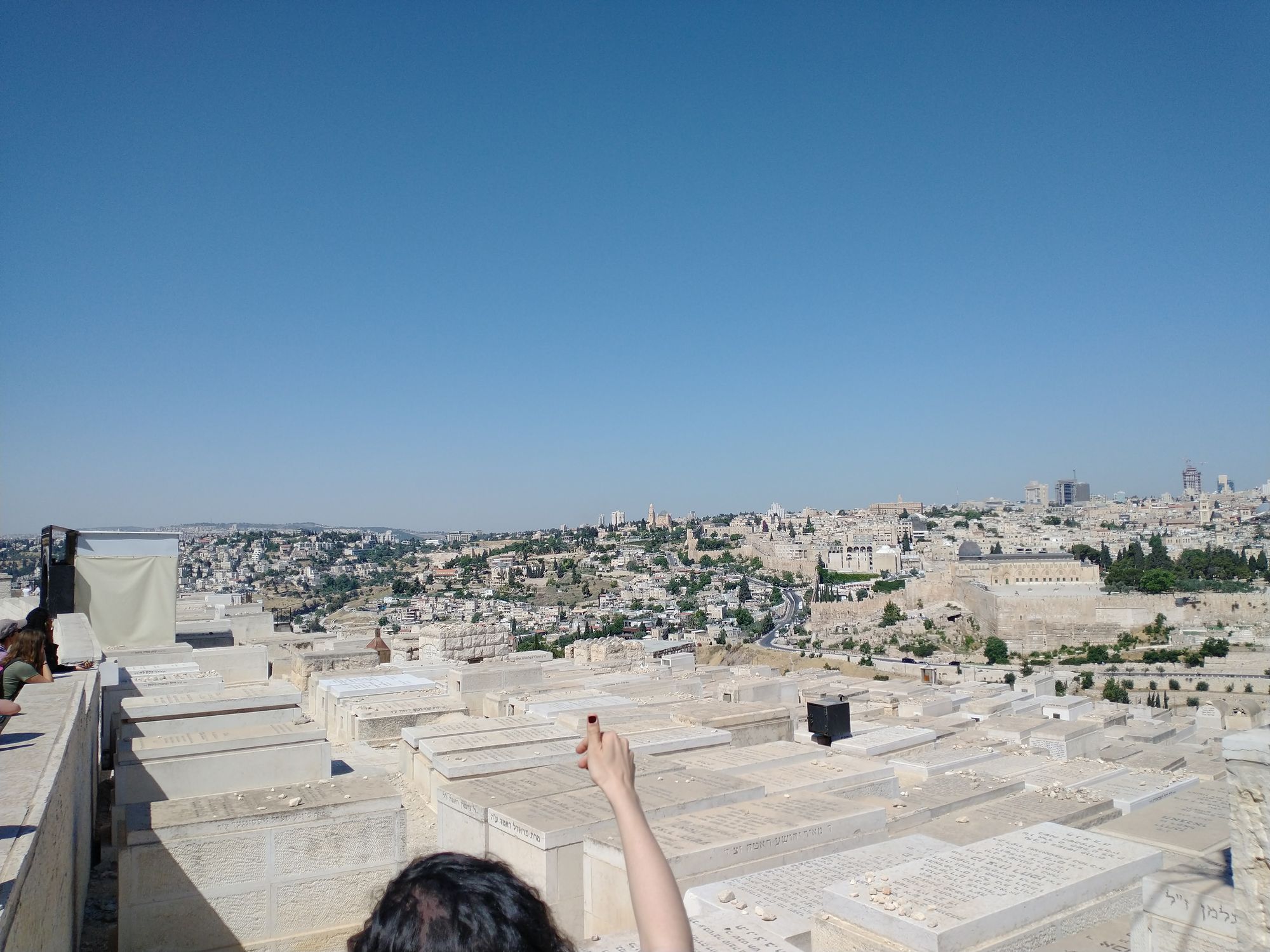
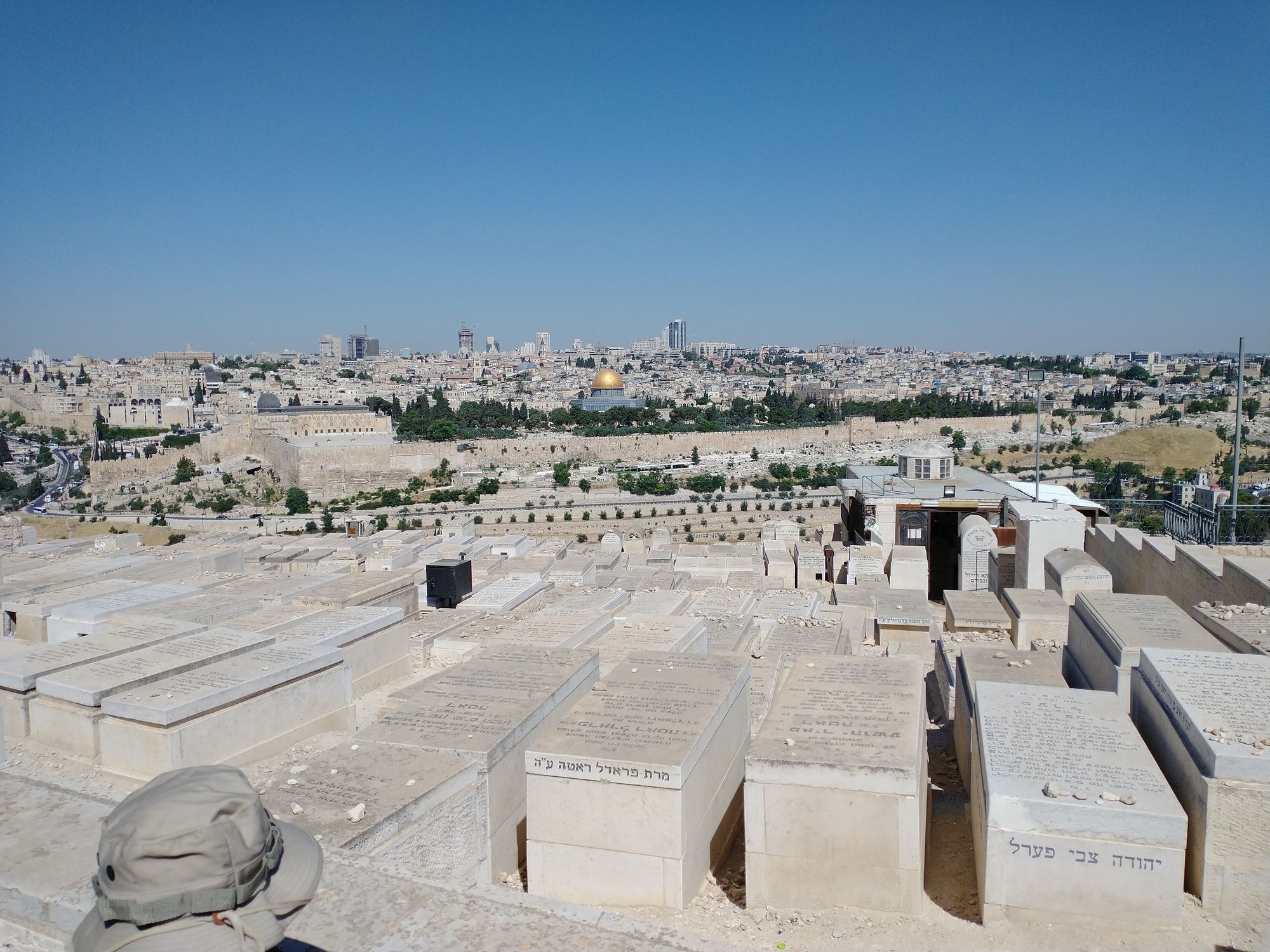
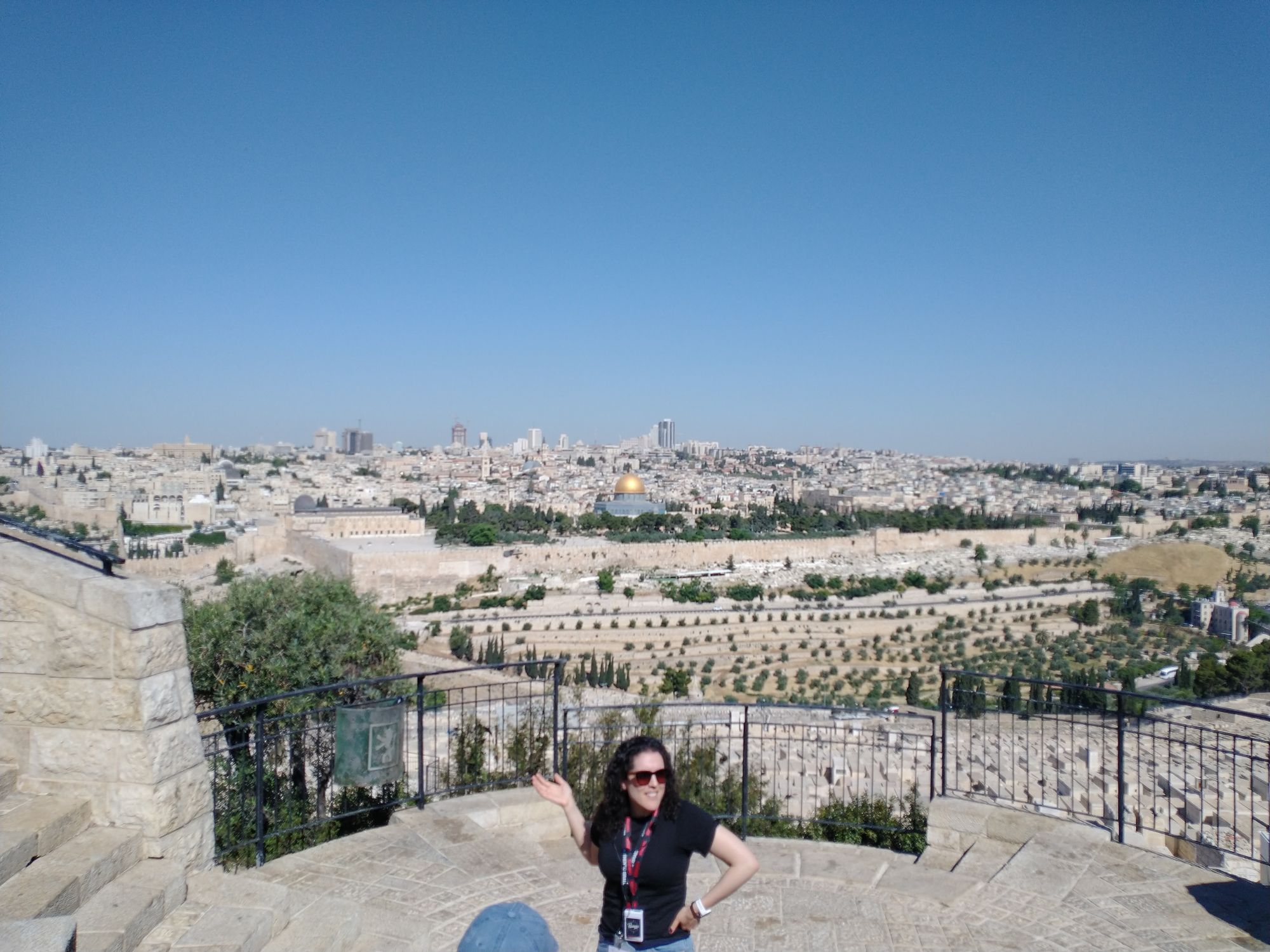
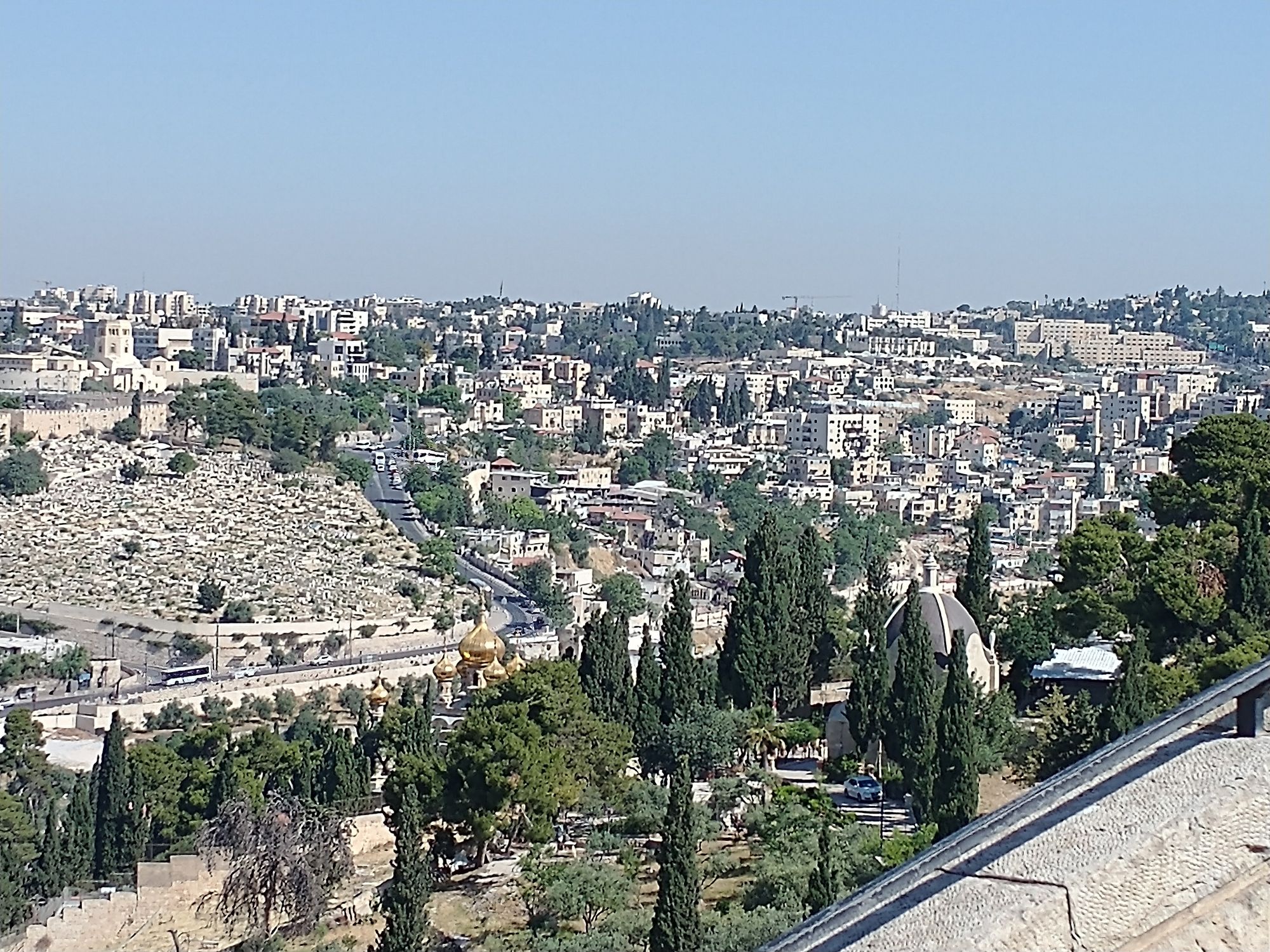
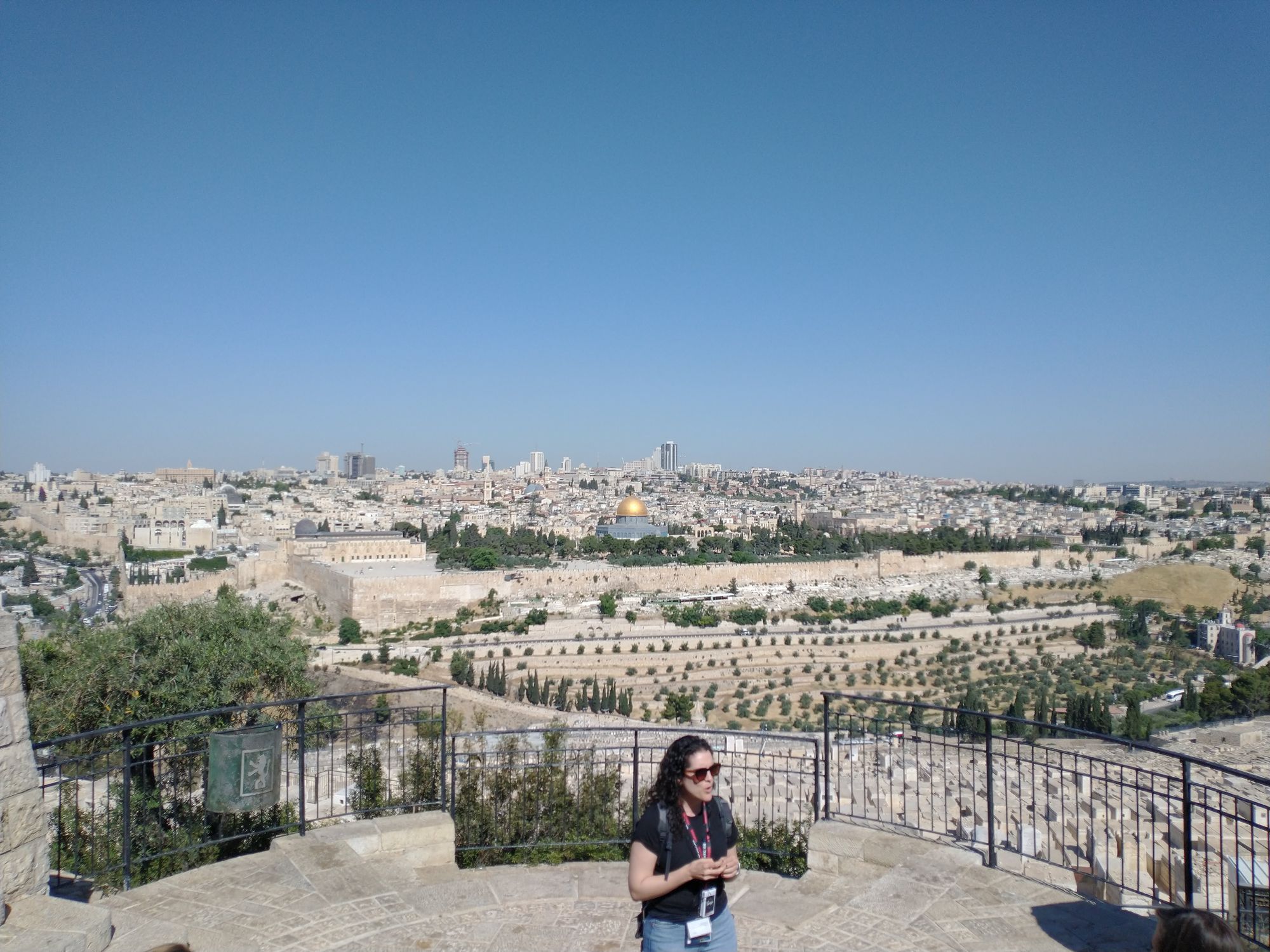
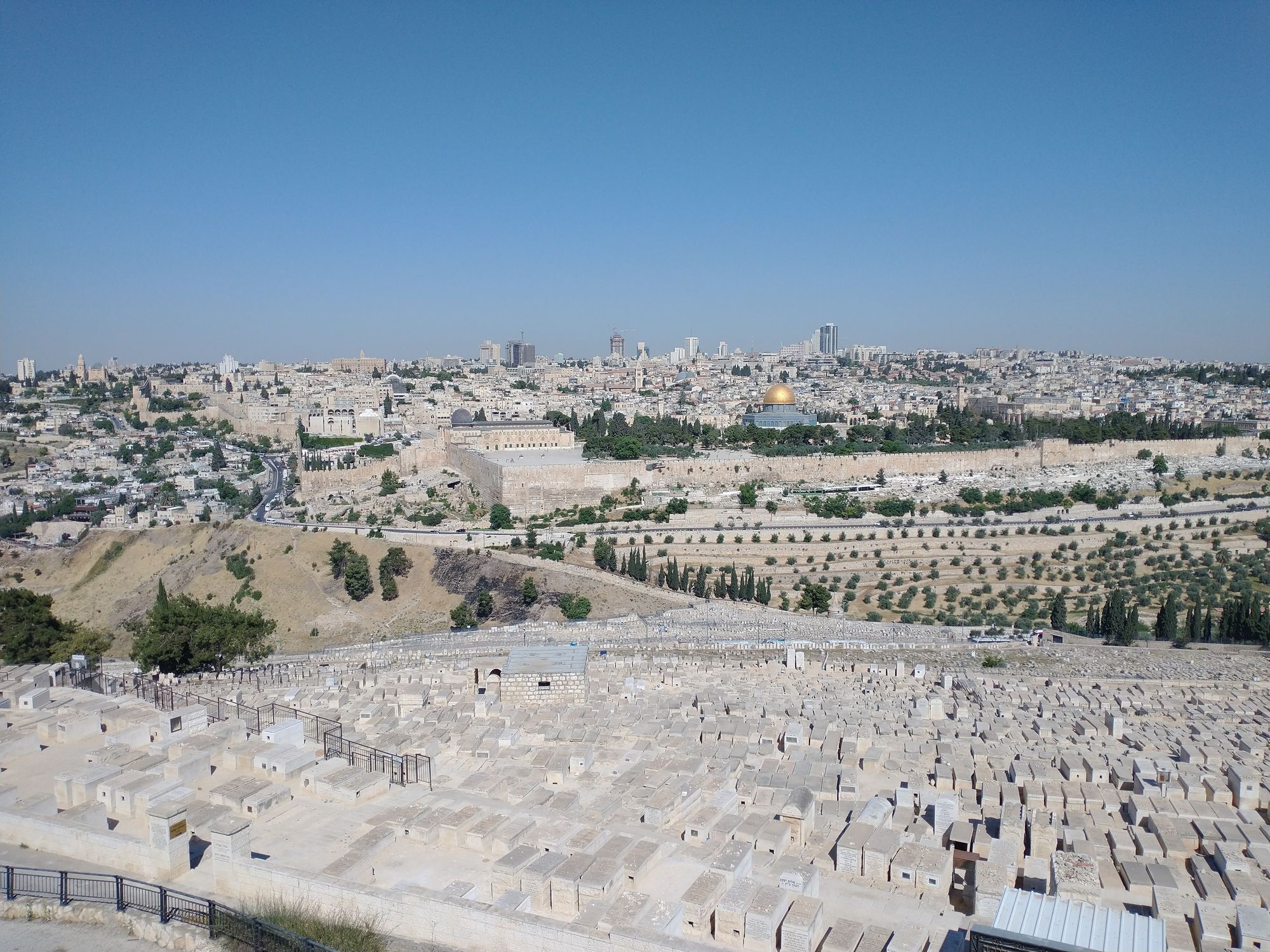
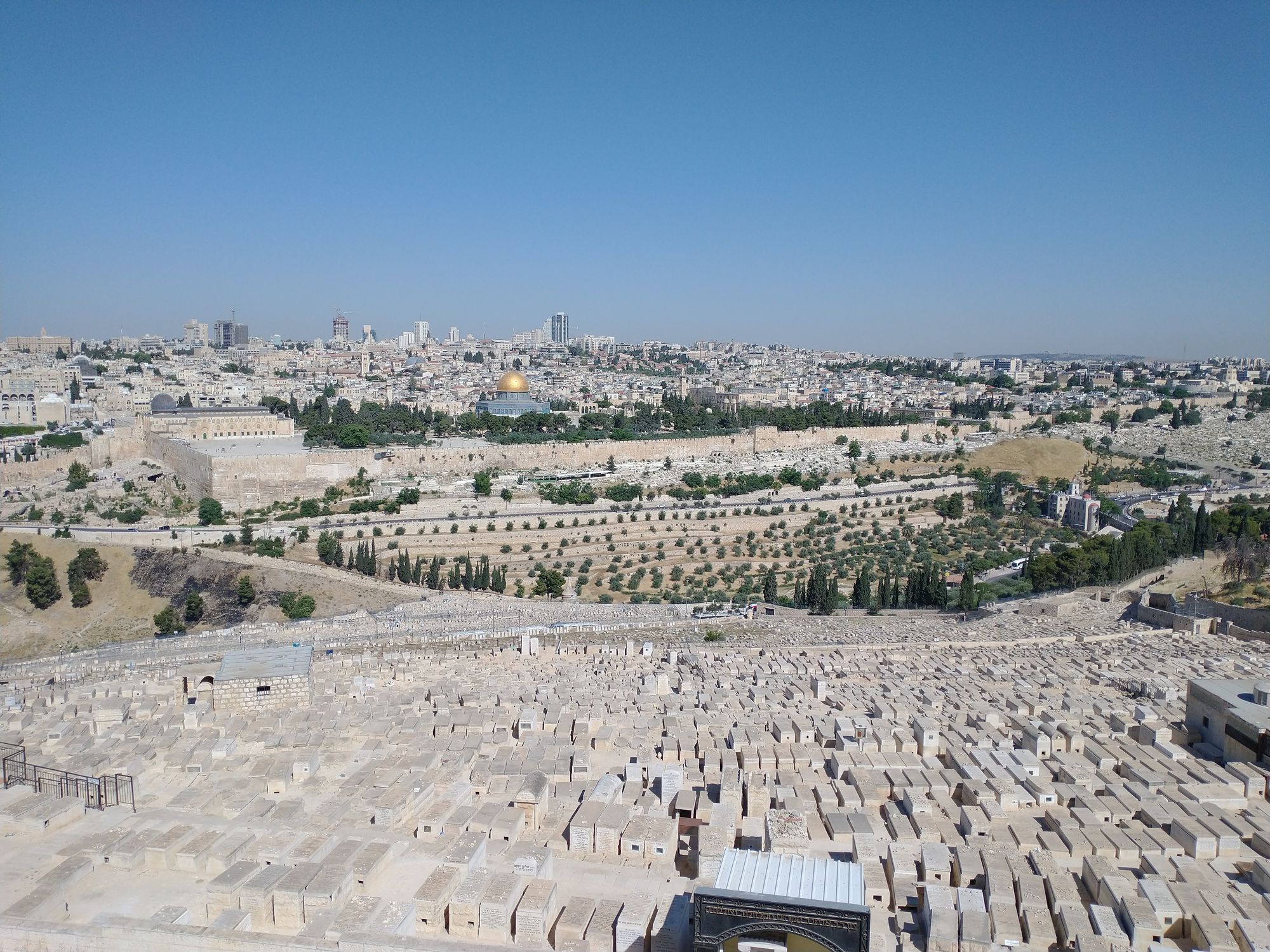
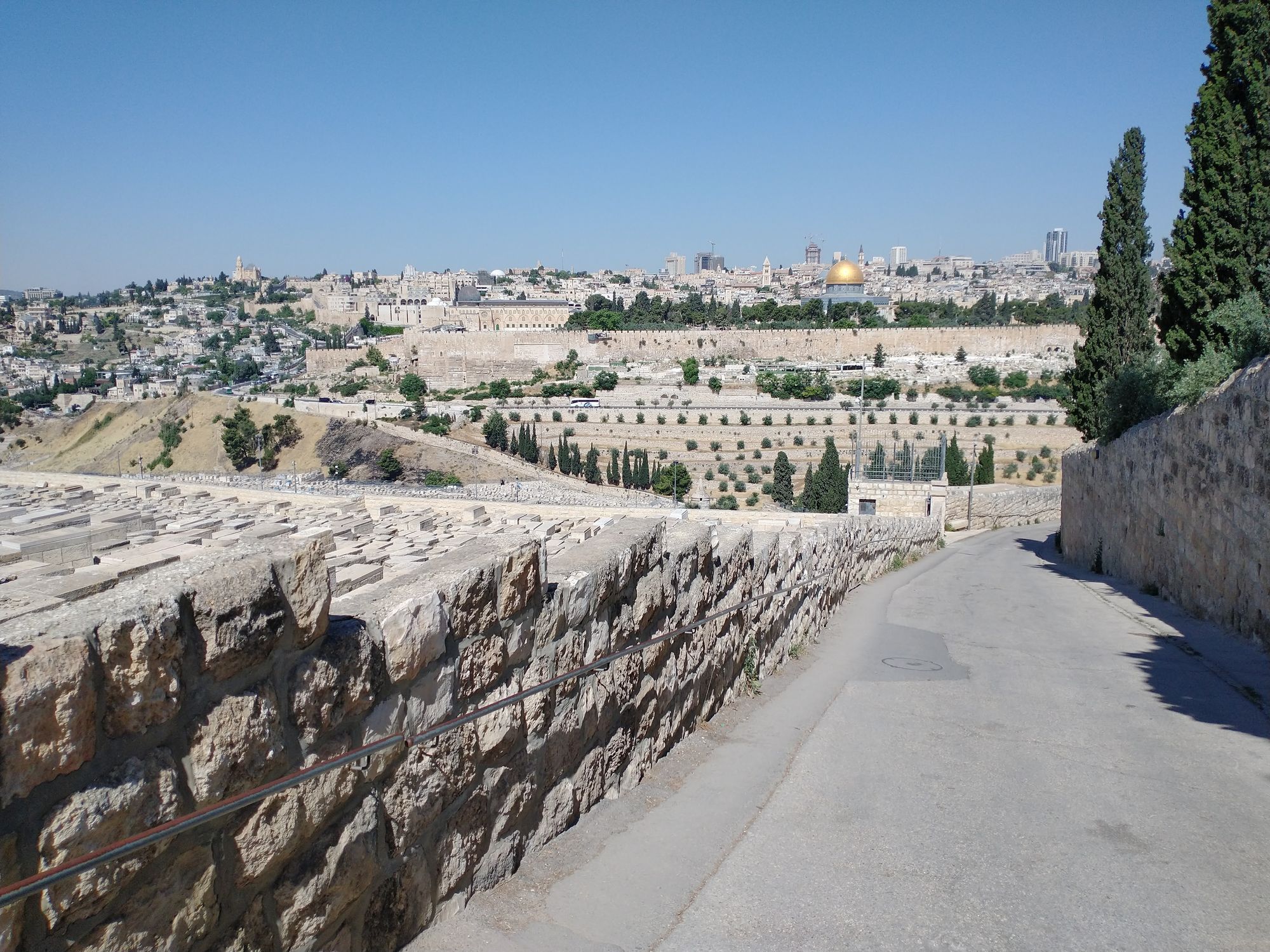
For the Bible scholars out there, you'll remember that Jewish law forbids corpses to reside within city walls. Historically, this cemetery was outside the city walls, but in modernity Jerusalem has grown to encompass a much larger area than it did 2,000 years ago. Because of this, parts of the city extend beyond the boundaries of the cemetery.
Now, when I say "large" cemetery, let me put that into perspective. Here's a map of part of Jerusalem:

You can see the Golden Dome (on the Temple Mount) in the top left of the map. There's a small valley of green as you move east (part of the Kidron Valley). You can see some buildings and houses around the edges of the map, but the rest of the gray stone area is the cemetery. It's astoundingly large.
The second section we visited is a garden:
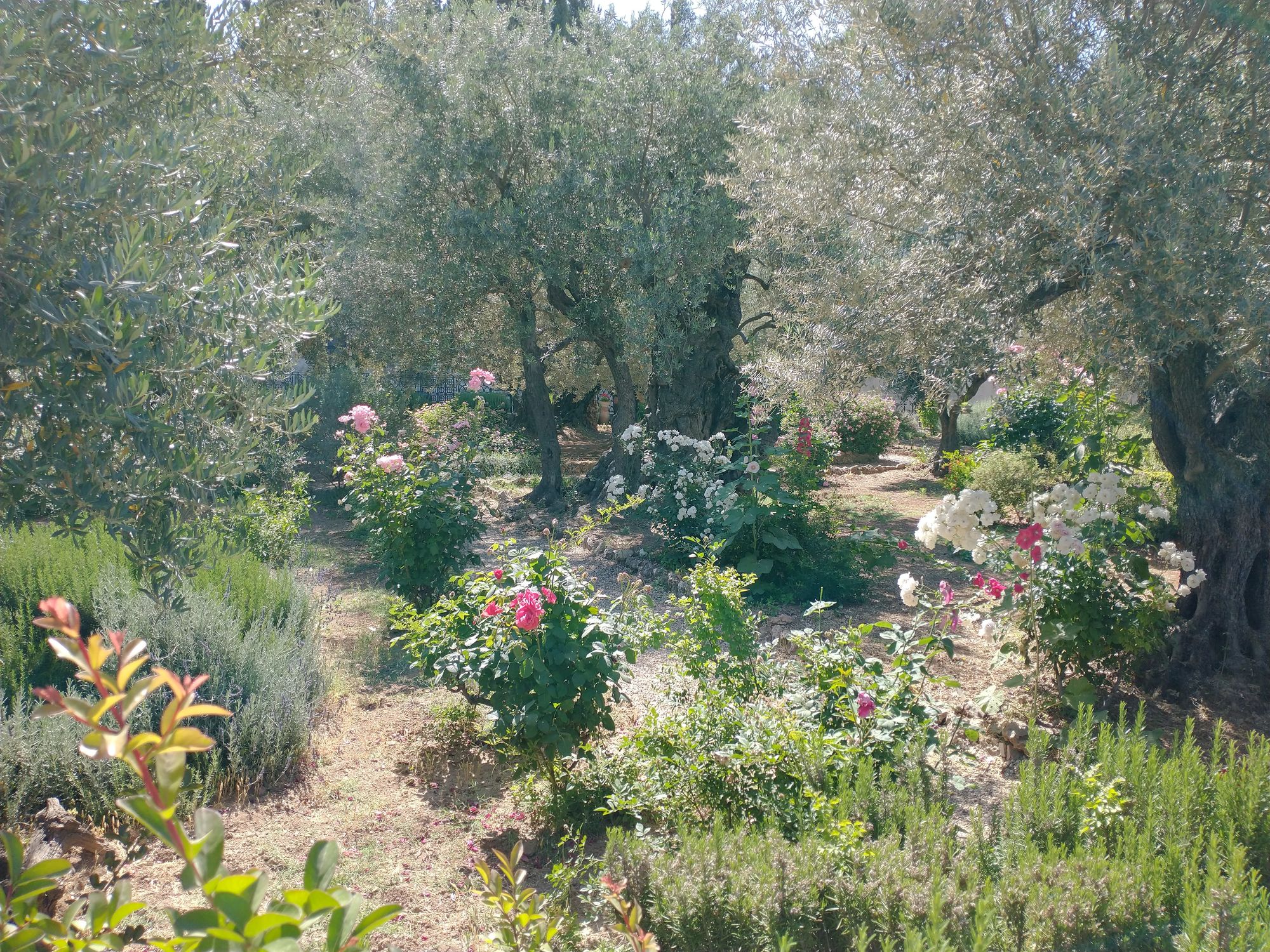
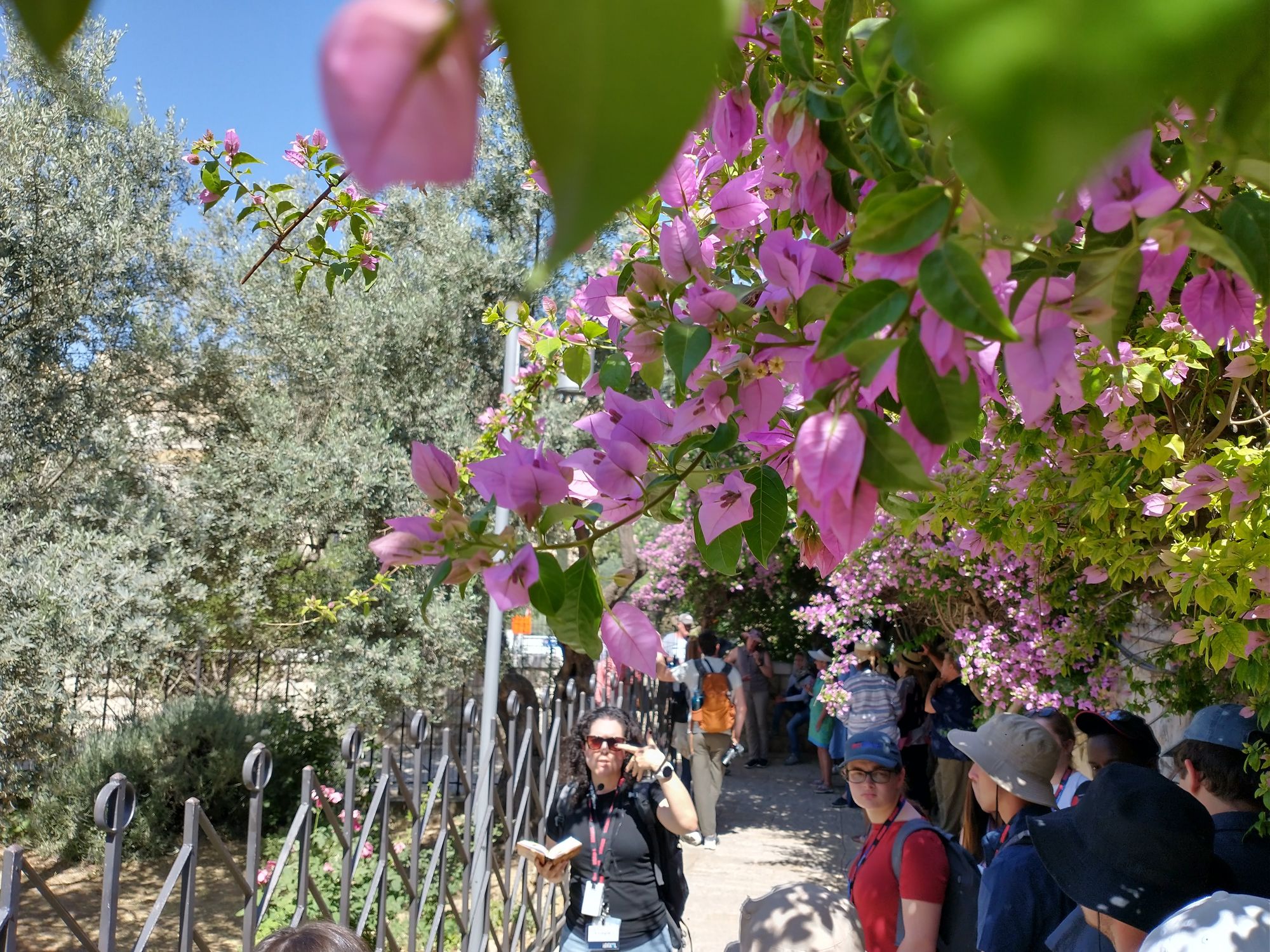
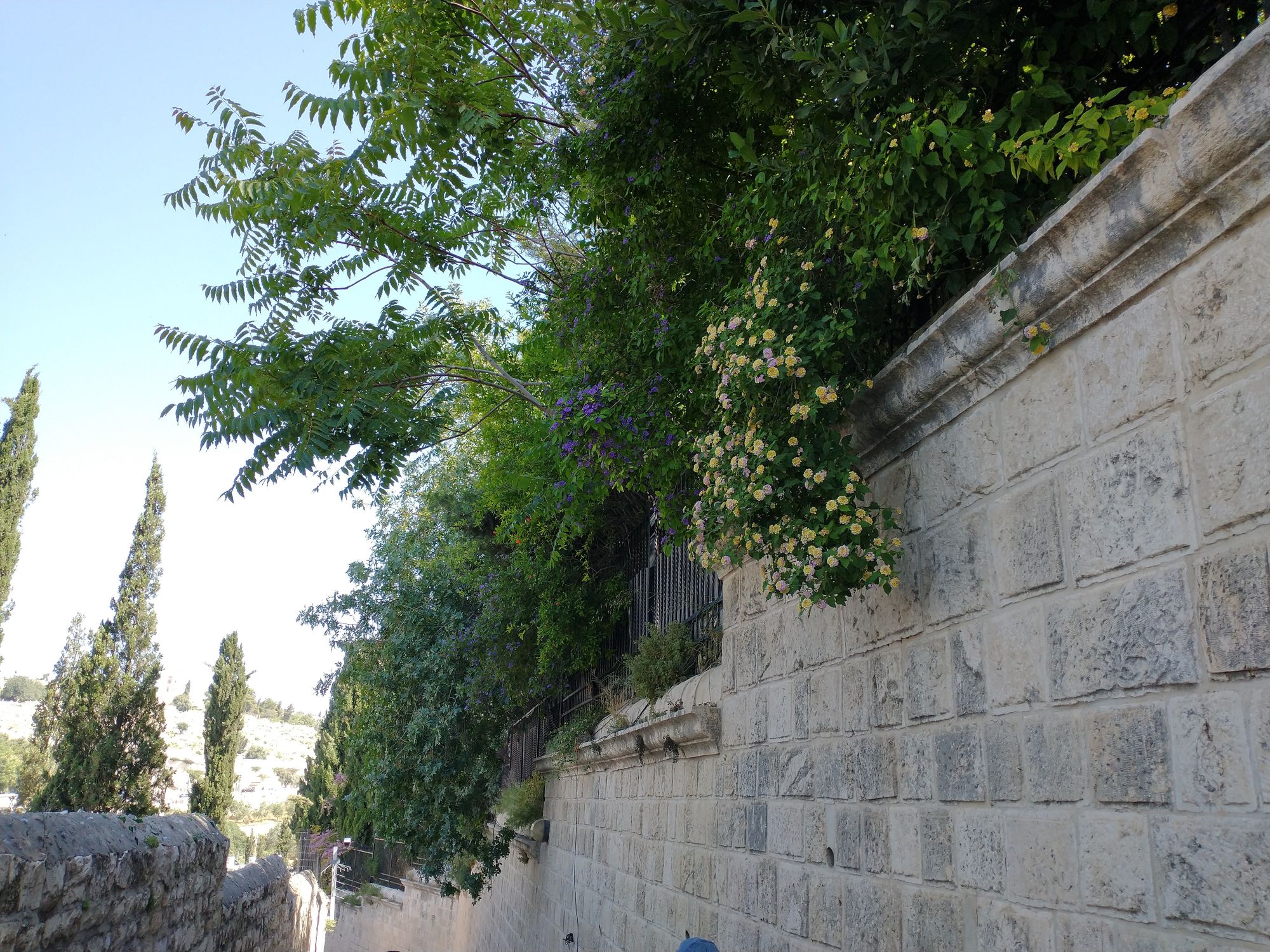
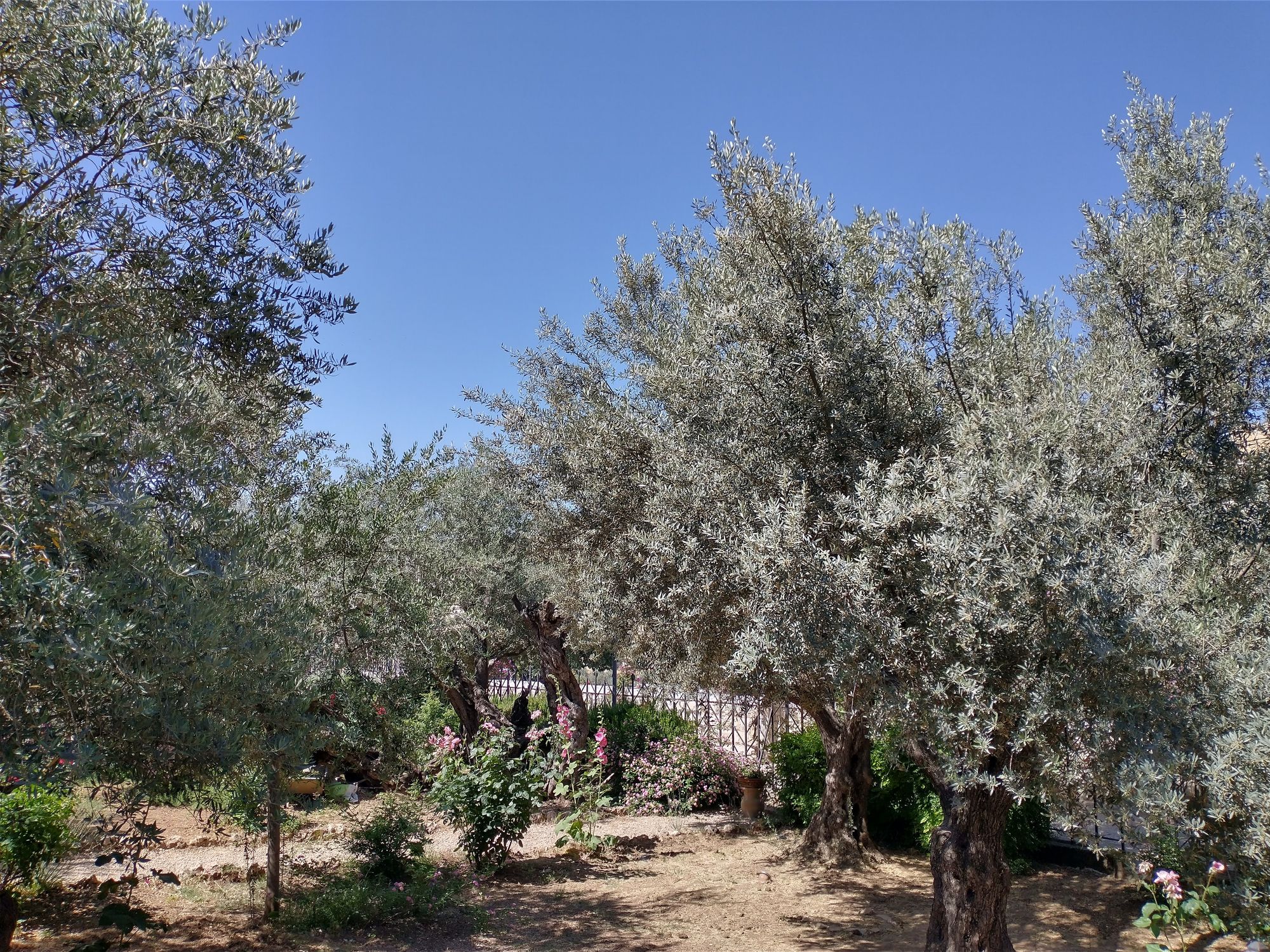
The olive trees in those pictures give the mountain its name. This garden is maintained as part of a Catholic church and monastery.
Moving along a bit, we came to a much more famous garden: the Garden of Gethsemane. It's at the base of the Mount of Olives here on the map:

The Church of All Nations is in the Garden of Gethsemane. And has this mosaic on the outside:

This was the first mosaic I've ever seen in the Middle East and the first time in my life that I've found a mosaic breathtaking. My pictures don't do it justice, but here they are anyway:
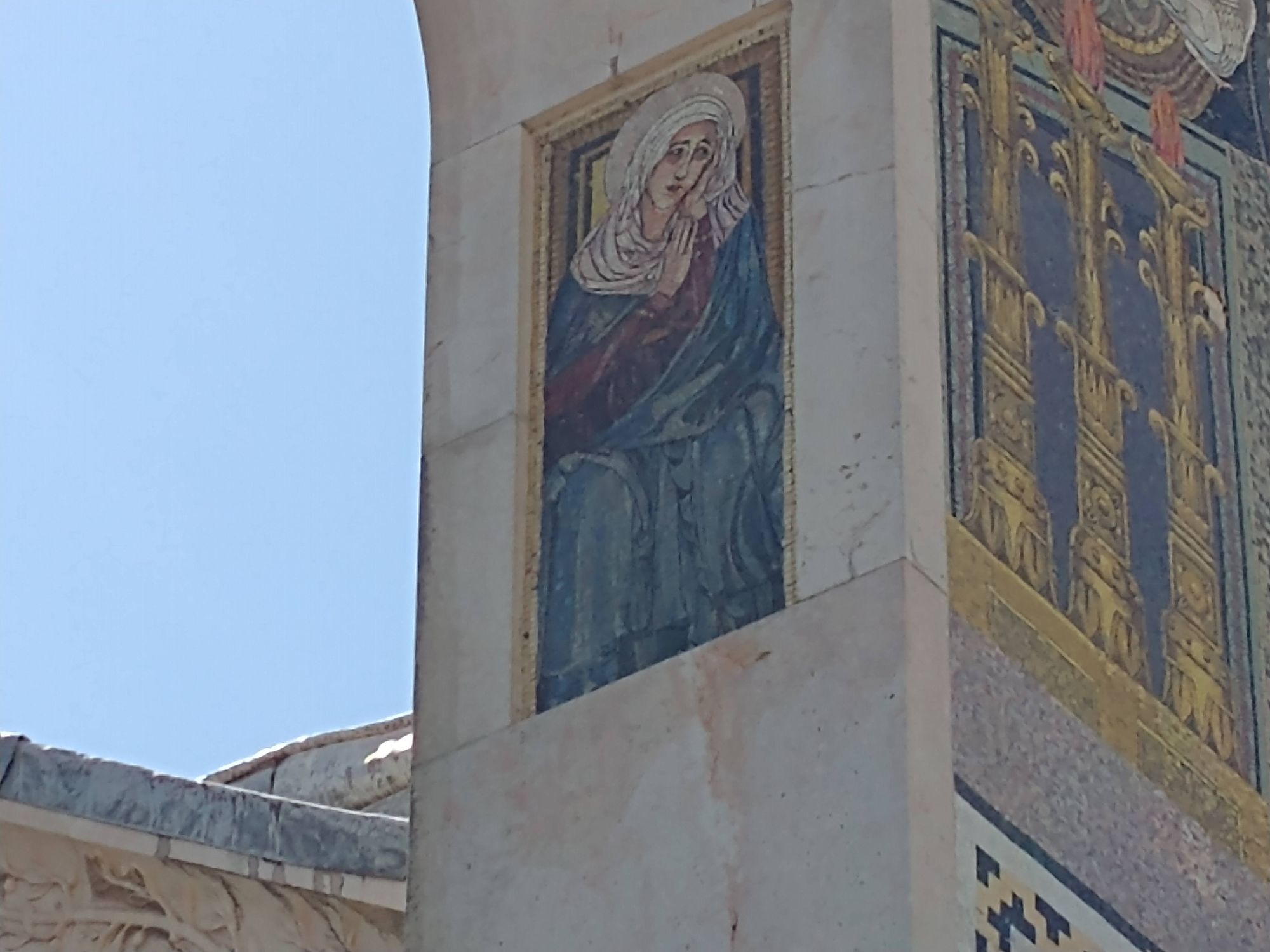
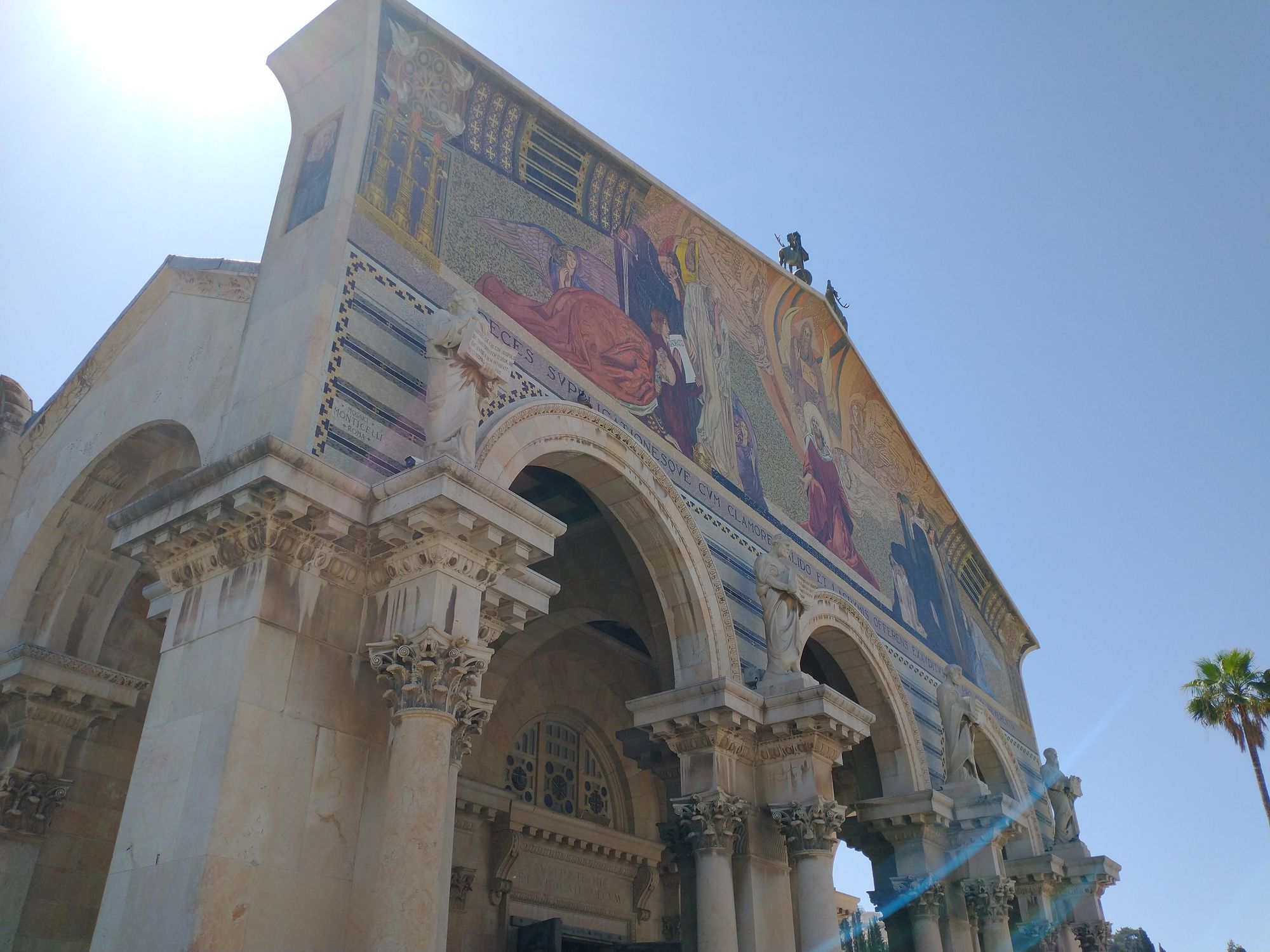
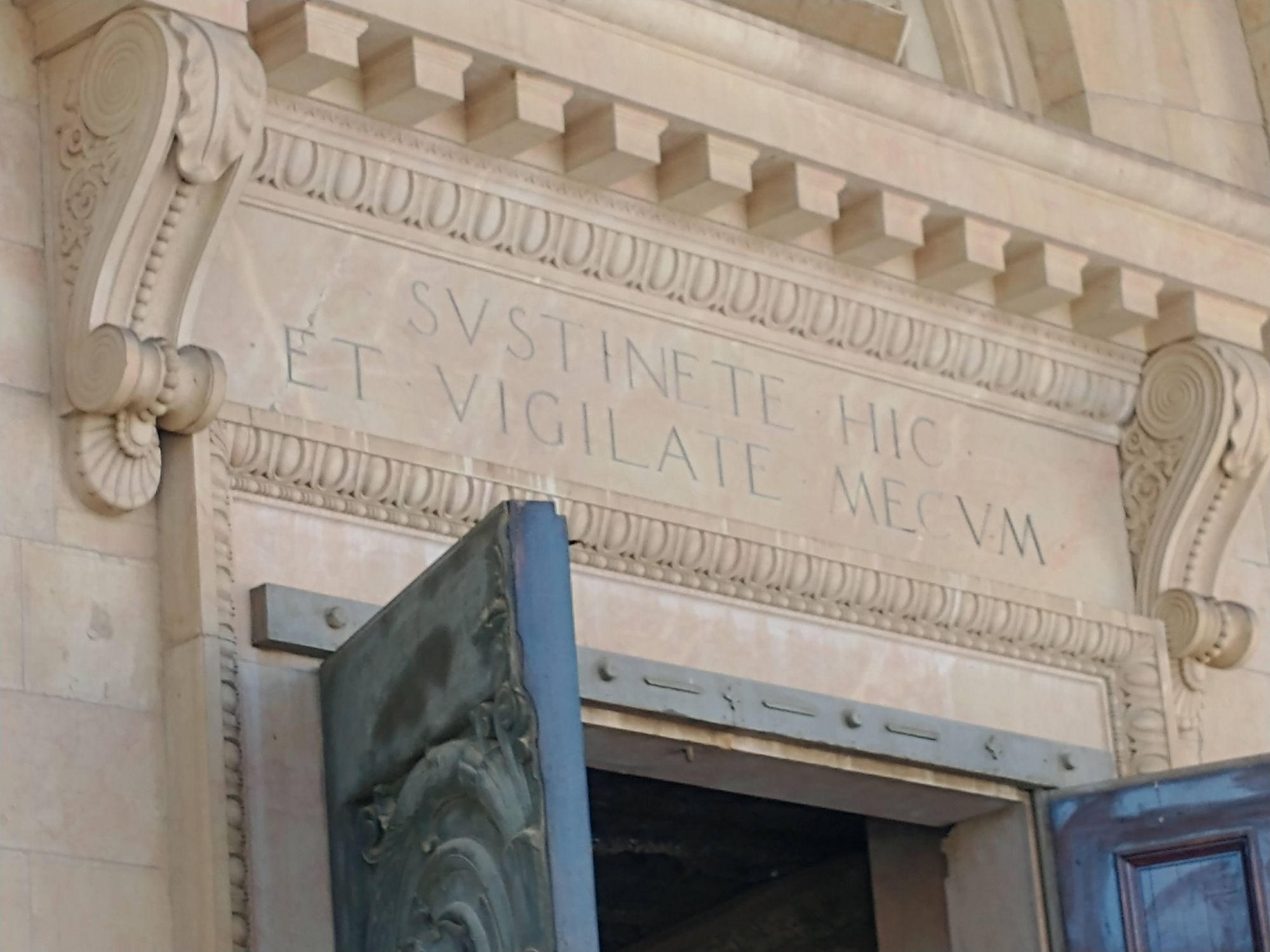
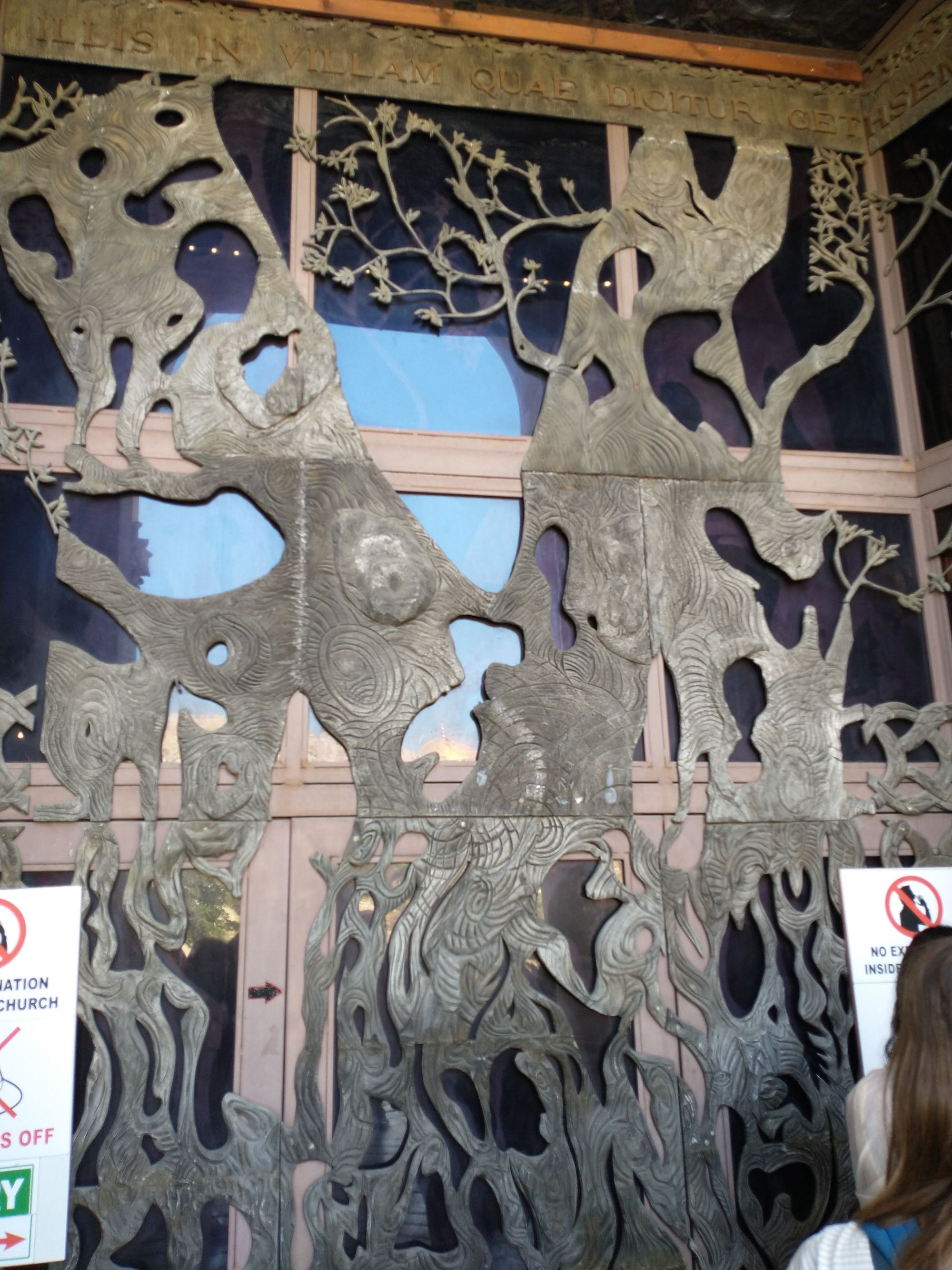
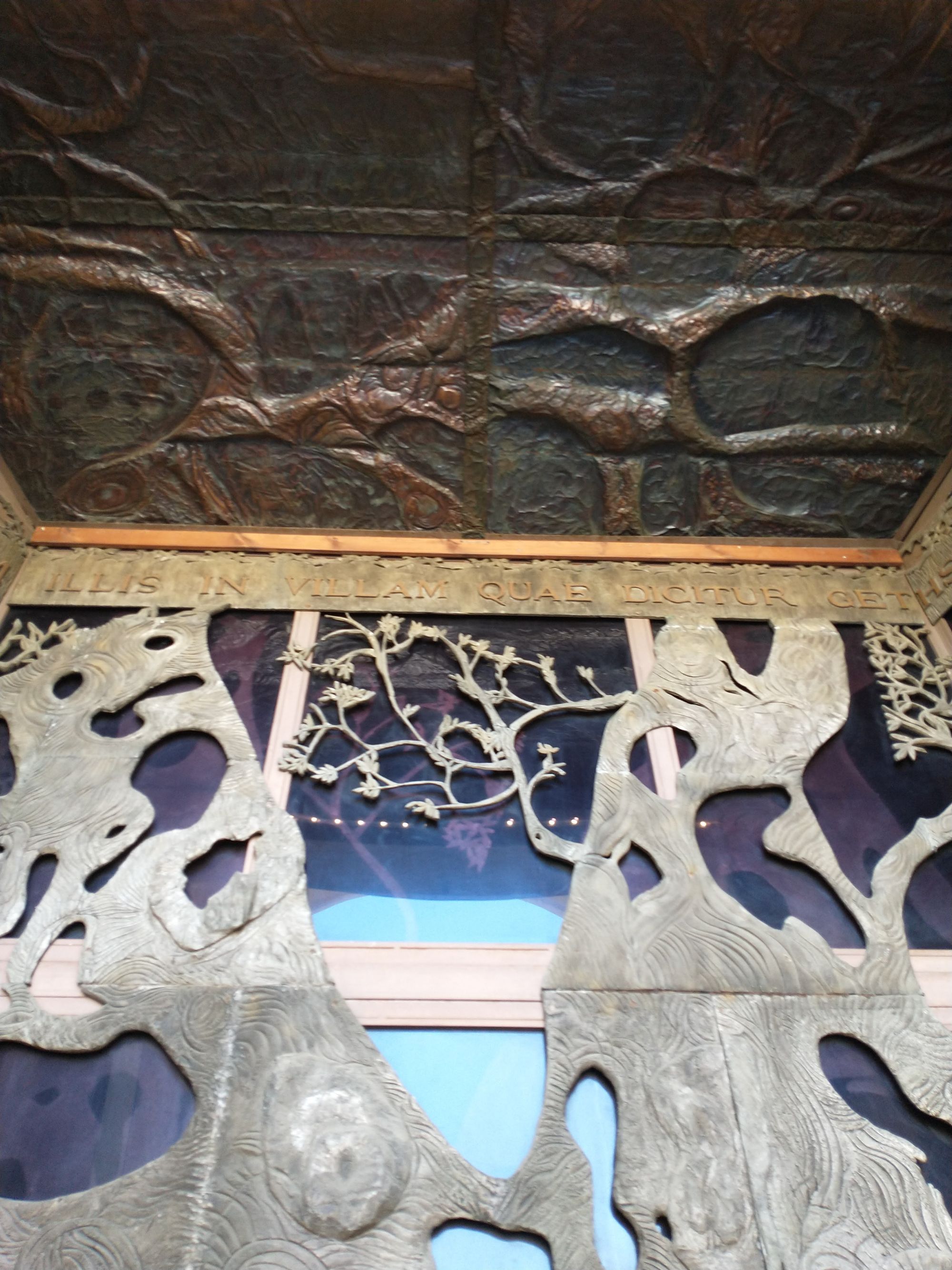
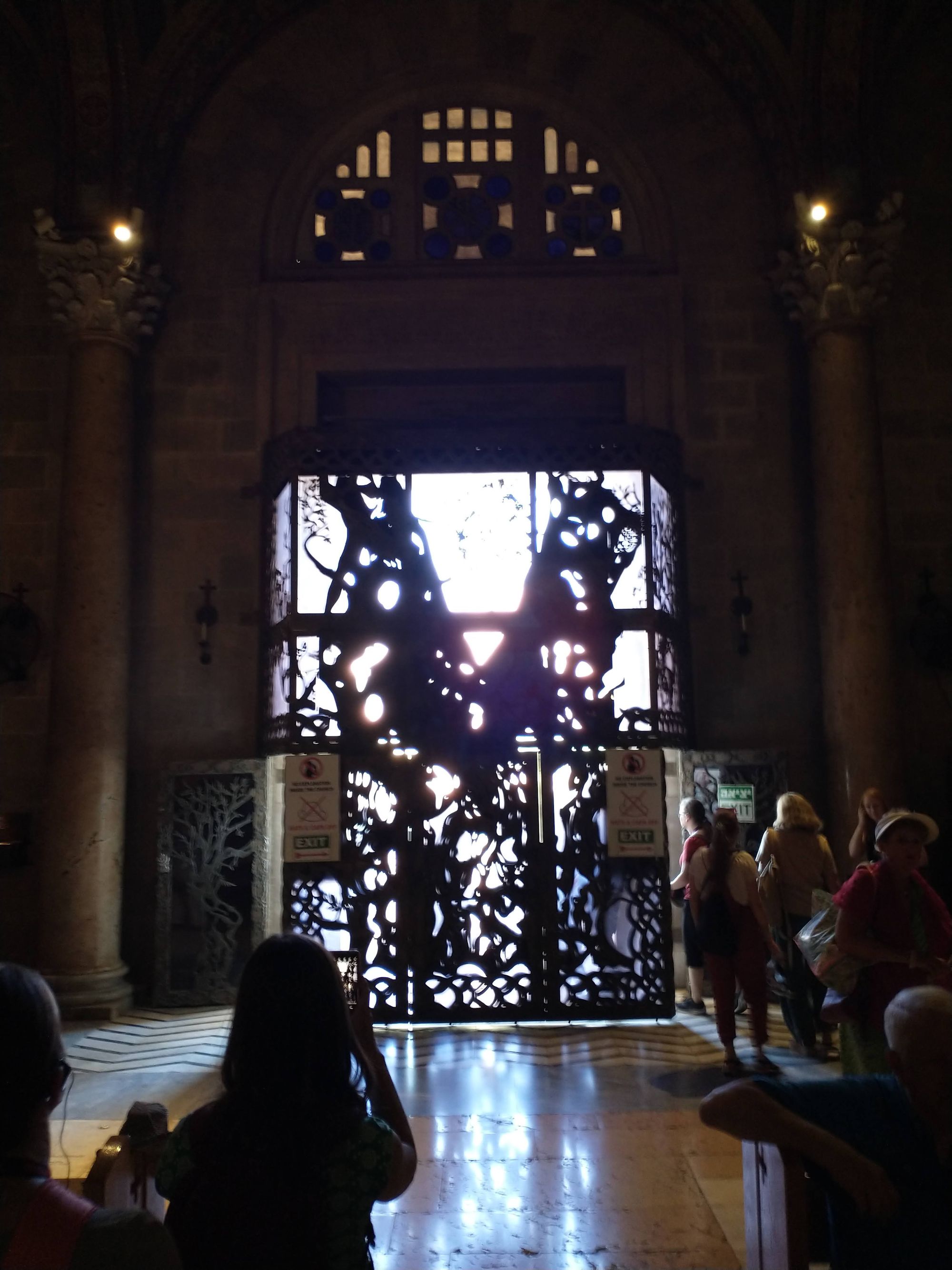
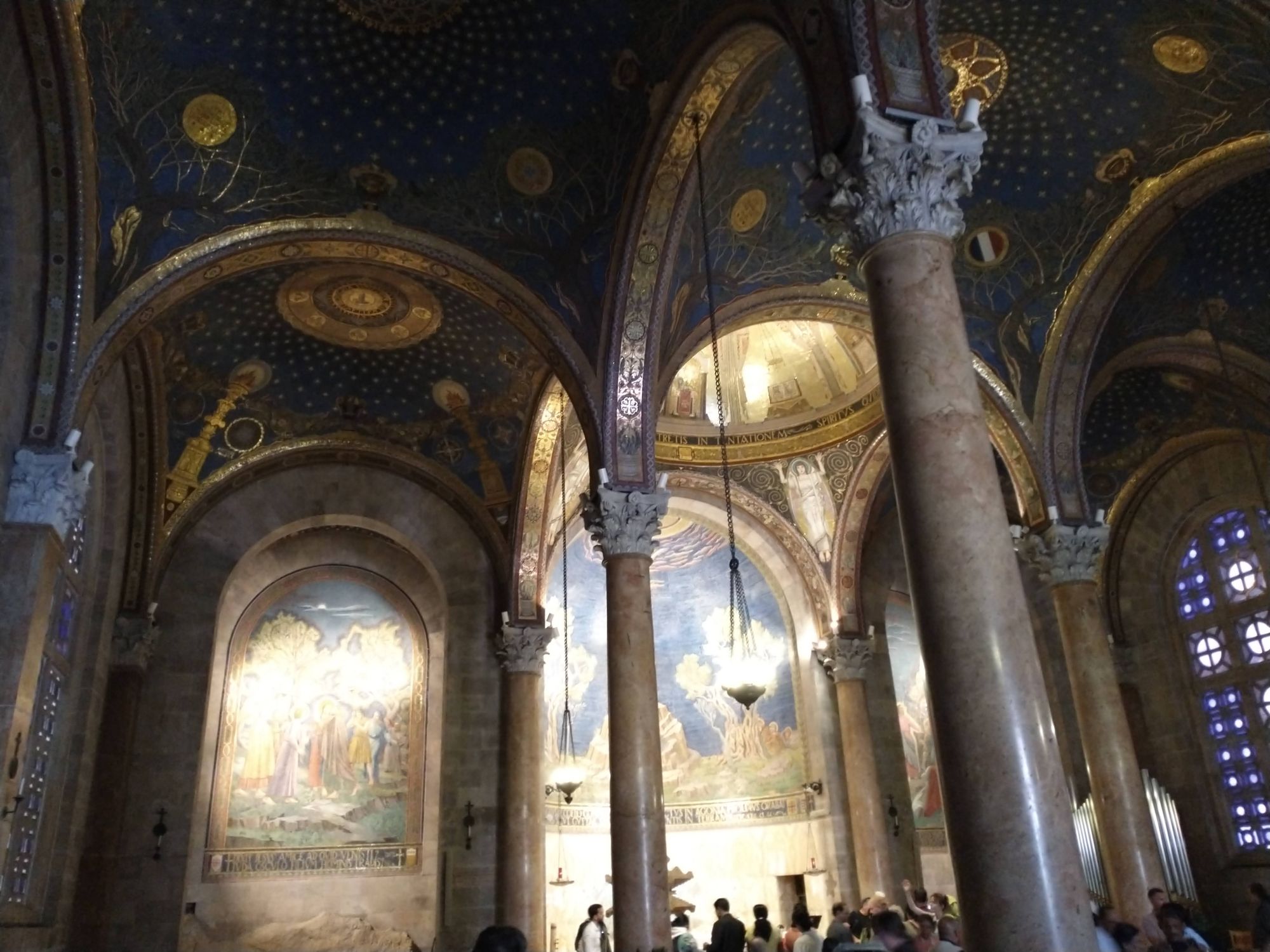
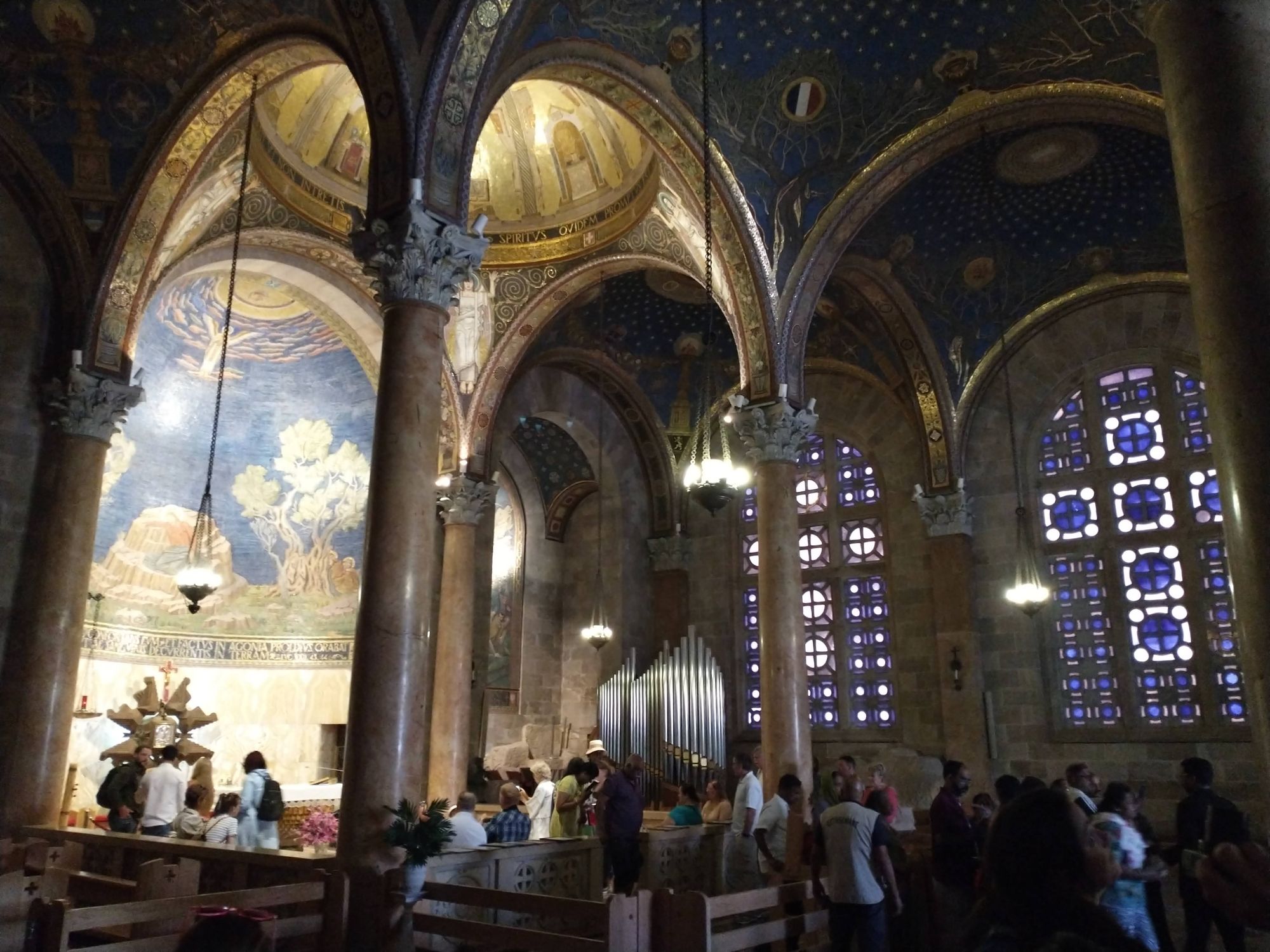
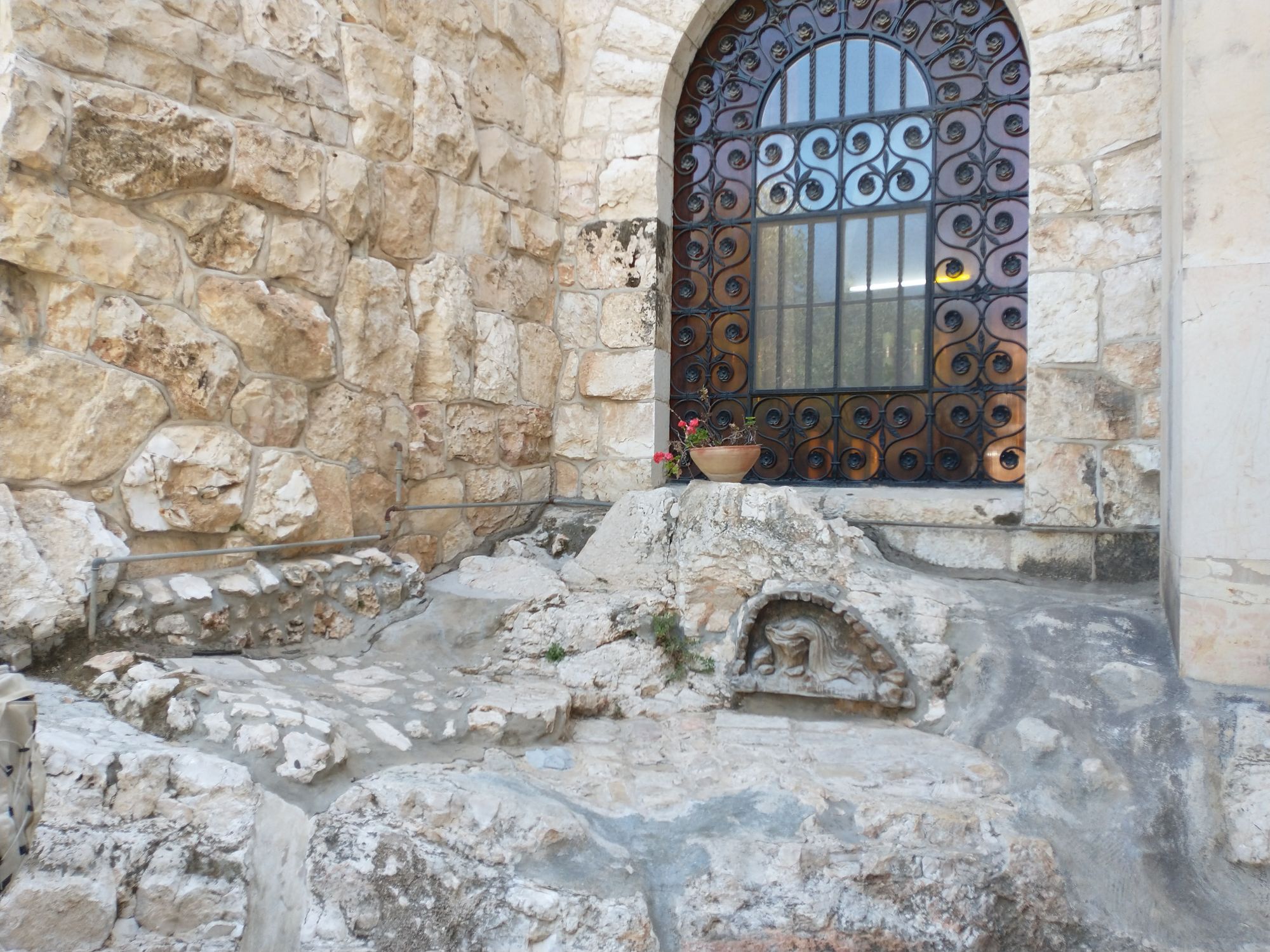
The building is also called the Basilica of the Agony because it's the place where Jesus prayed before his crucifixion in Mark 14. Jesus was in so much agony that he sweat blood.
From Wikipedia:
The church was built between 1919 and 1924 using funds donated from many different countries. The coat-of-arms of twelve of the countries from which donations originated are incorporated into the ceiling, each in a separate, small dome, and also into the interior mosaics. The countries honored in this way are, east to west (altar to entrance) and beginning with the northern apse: Argentina, Brazil, Chile and Mexico; in the middle of the church are commemorated: Italy, France, Spain and the United Kingdom, and to the right: Belgium, Canada, Germany, and the United States of America. The mosaics in the apses were donated by Ireland, Hungary, and Poland (by the sculpturist Tadeusz Adam Zieliński). The crown around the bedrock itself was a gift of Australia. These multi-national donations give the church one of its present names as the "Church of All Nations".
That's the end of my time on the Mount of Olives, and I'll continue next time on two famous roads that Jesus walked down in his lifetime. On one he was celebrated, on the other he was condemned.
subscribe to get email updates and support my work
Click the link below or the subscribe button at the bottom of the page to support my work and get an email every time I make a new post!


